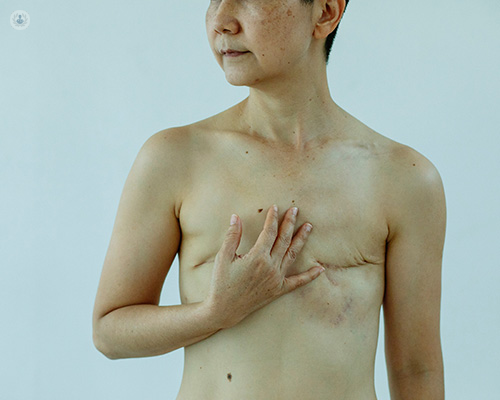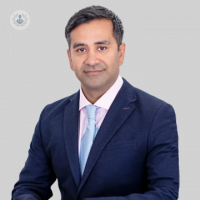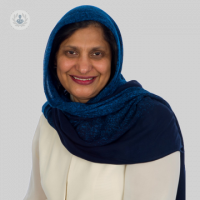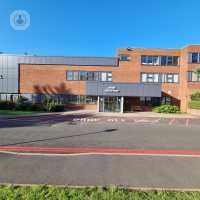Preventive mastectomy
What is a preventive mastectomy?
Also known as a prophylactic mastectomy or risk-reducing mastectomy, a preventive mastectomy is the surgical removal of one or both breasts to reduce the risk of breast cancer in women who are in the high-risk group of developing the disease.
The surgery can greatly reduce the risk of breast cancer (up to 90 to 95 per cent). But it cannot 100 per cent guarantee that breast cancer will never develop. This is because it’s not possible to remove all breast tissue; sometimes breast tissue is located outside of the breast, such as above the collarbone, in the chest wall and in the armpit. In these cases, a surgeon can’t possibly remove the tissue. Despite this, the possibility of breast cancer developing is significantly lowered.
The surgery is performed by a specialist consultant oncological breast surgeon.

Why is it done?
A preventive mastectomy is performed to reduce or eliminate the risk of breast cancer.
Women in the following categories might consider a preventive mastectomy due to a preventive mastectomy’s capability to reduce the risk of breast cancer by up to 90 per cent.
- a family history of breast cancer
- with genetic mutations that greatly increase the risk of breast cancer, the more well-known mutations being BRCA 1, BRCA2 and TP53
- a previous case of breast cancer in one of their breasts
- a history of radiation therapy in the chest, particularly below the age of 30
What does the procedure involve?
Of the following types of procedure, a specialist will advise you on which is most appropriate for your individual needs. In most cases, both breasts are removed (a bilateral procedure). In a simple or total mastectomy, the entire breast is removed (all breast tissue, the areola and nipple). There are different approaches to this, such as:
- Nipple-sparing mastectomy: a small incision (that can be made under the fold of the breast, near the areola or towards the outer section of the breast) is made. All possible breast tissue is removed but the skin, nipple and areola are left intact.
- Skin-sparing mastectomy: all possible breast tissue is removed along with the nipple and areola. Skin is left intact to perform breast reconstruction with the patient’s own tissue or an implant.
How do you prepare for a preventive mastectomy?
Before undergoing the procedure, it’s important to take time to decide if a preventive mastectomy is right for you. There are considerations such as the change in appearance and potential complications e.g. bleeding, infection, scar tissue.
Aftercare following mastectomy surgery
Post-surgery, a dressing is placed over the wound and drainage tubes are used to prevent lymphatic fluid and blood from building up. A rest period is required before returning to activity.
Routine screening post-surgery is still required due to the impossibility of removing 100 per cent of breast tissue. After the removal of their breasts, some women opt for reconstructive surgery (if reconstruction wasn’t performed during the preventive procedure).
Alternatives to this procedure
Women who are not in the high-risk category (from aggressive breast cancer-causing genes) may choose long-term use of medication. Some women in the high-risk category may opt for more frequent breast screening because they don’t want to remove their breasts. More frequent screening increases the chance of early breast cancer detection and therefore, increases the chance of successful treatment due to it being caught in an earlier and more treatable stage.






